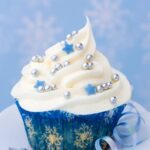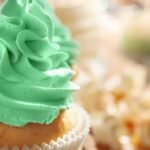How to decorate cake using whipping cream is a delightful way to add a personal touch to your baked creations. Whipping cream, also known as heavy cream, can be used to create various designs and textures, making it a versatile tool for cake decorating.
In this article, we will explore the essential tools and ingredients needed for decorating cakes with whipping cream, as well as step-by-step instructions on how to properly whip the cream and achieve the right consistency for decorating.
When it comes to cake decorating with whipping cream, having the right tools and ingredients is essential for successful results. From piping bags and tips to choosing the right type of whipping cream, we will cover everything you need to know to get started. Additionally, we will provide tips on achieving the perfect consistency for decorating and creating professional-looking finished cakes.
Whether you’re looking to create simple designs such as rosettes and swirls or more intricate patterns like flowers and layered designs, whipping cream offers endless possibilities for cake decoration. We will also address common issues that may arise during the decorating process, such as deflating cream or color bleeding, providing troubleshooting tips to ensure the longevity of whipped cream decorations on your cakes. So let’s dive in and discover the art of cake decorating with whipping cream.
Essential Tools and Ingredients for Cake Decorating With Whipping Cream
When it comes to cake decorating with whipping cream, having the right tools and ingredients is essential for achieving professional-looking results. Here is an overview of the necessary equipment and ingredients you will need to successfully decorate cakes with whipping cream:
- Whipping Cream: The most important ingredient for decorating cakes with whipping cream is, of course, the cream itself. When choosing whipping cream, opt for a high-fat content (at least 30%) as it will whip up better and hold its shape longer.
- Piping Bags: Piping bags are essential for creating different designs and shapes on the cake. Disposable piping bags are convenient but investing in reusable ones can also be cost-effective in the long run.
- Piping Tips: A variety of piping tips will allow you to create different patterns and textures. Start with basic tips such as star tips, round tips, and leaf tips, and then expand your collection as you become more comfortable with cake decorating.
- Cake Turntable: A turntable makes it easier to evenly frost and decorate a cake. It allows for smooth and consistent rotations while decorating, resulting in a more professional finish.
- Bench Scraper or Offset Spatula: These tools are essential for achieving smooth surfaces and clean edges while decorating a cake with whipping cream.
In addition to these essential tools and ingredients, having a good quality mixer or whisk for whipping the cream is important. Using fresh ingredients such as good quality vanilla extract or other flavorings can also elevate the taste of your whipped cream decorations.
Remember that having the right equipment does not guarantee success – practice and patience are key when learning how to decorate cakes using whipping cream. With the proper tools and ingredients, you’re well on your way to creating beautiful and delicious whipped cream decorations for your cakes.
Preparing the Whipping Cream for Cake Decorating
Step-by-Step Instructions
The first step in decorating a cake with whipping cream is preparing the cream itself. To begin, make sure that your whipping cream is very cold, as this will help it whip up better. Pour the desired amount of whipping cream into a chilled mixing bowl and add any flavorings or sweeteners at this stage if desired.
Using an electric mixer or stand mixer, start whipping the cream on low speed to avoid splattering. Gradually increase the speed as the cream thickens, and continue beating until stiff peaks form. Be careful not to over-whip, as this can cause the cream to become lumpy.
Tips for Achieving the Right Consistency
One important aspect of working with whipping cream for cake decorating is achieving the right consistency. The whipped cream should be firm enough to hold its shape when piped, but still smooth and creamy.
To test if it’s ready, stop the mixer and lift out the beaters; if the peaks that form stand upright without collapsing, then it’s ready to use. If you find that you have over-whipped your cream and it has become too thick or lumpy, simply fold in a little extra unwhipped cream until you reach your desired consistency.
Using Stabilizers
For longer-lasting results in warmer conditions or while making elaborate decorations with whipped cream, consider using stabilizers such as gelatin or cornstarch to help maintain its structure. Gelatin can be mixed with water and added to the whipped cream during preparation, while cornstarch can be blended into the sugar before adding it to the whipping cream. These additives will help prevent your beautiful designs from melting or deflating over time.
By following these steps and tips for preparing whipping cream for cake decorating, you’ll be well on your way to creating stunning designs on your cakes that are not only visually appealing but also deliciously creamy – an irresistible combination for any dessert lover.
Basic Techniques for Decorating With Whipping Cream
Decorating cakes with whipping cream can be a fun and creative way to add a touch of elegance and flavor to your baked creations. Whether you’re a beginner or an experienced baker, mastering the basic techniques for decorating with whipping cream is essential for achieving beautiful and professional-looking results.
One of the most common and versatile ways to decorate a cake with whipping cream is by creating simple designs such as rosettes, swirls, and borders. To do this, fill a piping bag fitted with a star-shaped tip with whipped cream, then gently apply pressure to pipe the cream onto the cake in circular or swirled motions. This technique is perfect for adding decorative elements to any cake, from birthday cakes to wedding cakes.
Using piping bags and different tips can also help achieve various effects when decorating with whipping cream. For example, using a round tip allows you to create smooth lines or dots, while using a petal tip can help create floral designs. Experimenting with different tips and techniques can give you the freedom to unleash your creativity and personalize each cake according to your vision.
When learning how to decorate a cake using whipping cream, it’s important to practice patience and precision. Achieving the right consistency for the whipped cream is crucial for successful decorations. By following step-by-step instructions on properly whipping the cream and paying attention to details like texture and temperature, you can ensure that your decorations hold their shape and look visually appealing.
Mastering these basic techniques for decorating with whipping cream will lay a solid foundation for exploring more advanced designs and patterns. With dedication and practice, you’ll soon be able to create stunning cakes that not only taste delicious but also showcase your artistic talents in cake decorating.
Advanced Decorating Techniques With Whipping Cream
Decorating cakes with whipping cream opens up a world of possibilities for creating intricate and beautiful designs. Once you have mastered the basic techniques, it’s time to take your skills to the next level with advanced decorating techniques. From creating delicate flowers to adding unique textures, here are some tips for taking your cake decorating with whipping cream to the next level.
Creating intricate designs such as flowers and intricate patterns requires a steady hand and attention to detail. To create flowers, start by piping a small dot in the center and then carefully pipe petals around it using a circular motion. You can also use different piping tips to create variations in petal shapes and sizes. For intricate patterns, consider using stencils or freehand piping to create unique and personalized designs on your cake.
Another advanced technique for decorating with whipping cream is creating layered and textured designs. To achieve this, start by layering different colors or flavors of whipped cream on the cake, using a spatula or piping bag to add depth and texture. You can also experiment with different tools such as combs or sculpting tools to create interesting textures on the surface of the cake.
When working with advanced decorating techniques, it’s important to take your time and practice patience. Creating intricate designs and layered textures takes time and precision, so don’t be discouraged if it doesn’t come out perfect on your first try. With practice and perseverance, you’ll be able to create stunning works of art using whipping cream as your medium.
Now that you’ve learned about advanced decorating techniques with whipping cream, you can elevate your cake decorating game and impress your friends and family with stunning desserts. Experiment with different designs, colors, and flavors to unleash your creativity and take your cakes to the next level.
Tips for Achieving Professional-Looking Finished Cakes
Achieving a professional-looking finished cake when decorating with whipping cream can seem like a daunting task, but with the right tips and techniques, it is definitely possible. One of the most important aspects of achieving a polished appearance is ensuring that the surface of your cake is smooth and even before you begin decorating.
This can be achieved by using a cake leveler to even out any domed tops or uneven layers. Additionally, applying a thin layer of frosting or buttercream before adding the whipping cream can help create a flawless base for your decorations.
Another tip for achieving professional-looking finished cakes is to pay attention to the edges of the cake. Using a turntable while decorating can make it easier to create clean, straight edges and uniform designs around the sides of the cake. Taking your time and using long, smooth motions with your piping bag will also help in achieving consistent and professional results.
Lastly, it’s important to address common decorating mistakes that can affect the final look of your cake. For example, if you find that your whipped cream decorations are deflating or losing their shape, it may be helpful to stabilize the cream with ingredients such as gelatin or cornstarch.
Additionally, if you experience color bleeding in your designs, consider using gel food coloring instead of liquid to achieve more vibrant and stable colors. By being mindful of these potential issues and implementing proper solutions, you can ensure that your finished cakes look as professional as those from a bakery.
Overall, taking the time to perfect these techniques and paying attention to small details will significantly enhance the overall appearance of your decorated cakes. With practice and patience, anyone can achieve beautiful and professional-looking finished cakes when using whipping cream as their primary decoration medium.
Flavoring and Coloring Whipping Cream for Cake Decorating
When it comes to decorating cakes with whipping cream, there are countless ways to add flavor and color to your creations. Whether you want to create a simple, elegant design or a vibrant, eye-catching masterpiece, the options for customizing your whipped cream decorations are limitless.
To start, let’s talk about flavoring. Adding extracts such as vanilla, almond, or even citrus flavors can elevate the taste of your whipping cream and complement the flavor of the cake itself. For a more intense flavor, consider infusing the cream with ingredients like coffee, herbs, or spices. This can create a truly unique and delicious experience for anyone enjoying your cake.
When it comes to coloring whipping cream for cake decorating, food coloring gels are the way to go. These highly concentrated colors allow you to achieve bright and vivid shades without compromising the consistency of the whipped cream. From pastel hues to rich and deep tones, food coloring gels give you complete control over the final look of your decorations.
In addition to adding flavor and color separately, consider combining both elements for an extra special touch. For example, a hint of lavender extract combined with a few drops of purple food coloring can result in a beautifully fragrant and visually stunning whipped cream that will take your cake decorating skills to the next level.
| Flavoring & Coloring Idea | Effect |
|---|---|
| Vanilla Extract + Yellow Food Coloring | Creates a classic and elegant yellow-hued whipped cream |
| Mint Extract + Green Food Coloring | Adds a refreshing taste and vibrant green color reminiscent of fresh mint leaves |
| Rose Water + Pink Food Coloring | Provides a delicate floral aroma and soft pink hue ideal for romantic or feminine designs |
Troubleshooting Common Issues in Cake Decorating With Whipping Cream
Addressing Common Issues
When it comes to decorating cakes with whipping cream, it’s not uncommon to encounter some common issues that can affect the appearance and stability of your designs. One common problem is the deflation of the whipped cream, which can result in a lackluster look and a less stable texture.
Another issue is color bleeding, where the color from the cream starts to seep into the cake or other decorations. Additionally, maintaining stability of the whipped cream decorations can be a challenge, especially in warm or humid environments.
Solutions for Successful Cake Decorating
To address these issues, it’s essential to understand the root causes and implement specific solutions. For example, when dealing with deflated whipped cream, it’s important to ensure that you are using fresh whipping cream and that it is being whipped at the correct temperature. Additionally, stabilizing agents such as gelatin or powdered sugar can be added to help maintain the consistency of the whipped cream.
To prevent color bleeding, make sure to properly prepare any colored whipping cream by using gel-based food coloring rather than water-based ones. It’s also important to avoid overmixing when adding color to the cream. Lastly, for maintaining stability in warm conditions, consider chilling your equipment and working in a cool environment.
Ensuring Longevity of Whipped Cream Decorations
Another important aspect of troubleshooting common issues in cake decorating with whipping cream is ensuring the longevity of your decorations on cakes. To achieve this, consider refrigerating your decorated cakes until they are ready to be served. You can also lightly brush your finished designs with a thin layer of unflavored gelatin mixed with water to provide additional stability.
By addressing these common issues and implementing strategic solutions, you can elevate your cake decorating skills using whipping cream while avoiding potential pitfalls. With proper troubleshooting techniques in place, you can create stunning and professional-looking cakes that will impress friends and family alike.
Conclusion
In conclusion, decorating cakes with whipping cream offers a world of creativity and innovation. From simple rosettes to intricate designs, the versatility of whipping cream allows bakers to create endless possibilities. By mastering the art of preparing and using whipping cream for cake decorating, individuals can elevate their desserts to new heights.
Achieving professional-looking finished cakes with whipping cream requires patience and attention to detail. It is essential to carefully choose the right whipping cream for the best results and practice proper techniques for whipping and decorating. Additionally, experimenting with flavorings and colors can add an extra layer of excitement to the process, allowing for unique and personalized creations.
For those looking to delve further into the world of cake decorating with whipping cream, there are numerous resources available for learning and inspiration. Whether through online tutorials, recipe books, or hands-on classes, there are plenty of opportunities to expand your skills and explore new techniques. So why not give it a try? With dedication and practice, anyone can learn how to decorate a cake using whipping cream like a pro.
Frequently Asked Questions
Can Whipping Cream Be Used to Decorate Cakes?
Whipping cream can definitely be used to decorate cakes. It adds a light and fluffy texture to the cake and is often used to create decorative swirls, rosettes, or other designs on top of the cake.
How Long Will Whipped Cream Last on a Cake?
Whipped cream typically lasts about 1-2 days on a cake when refrigerated. It is important to note that whipped cream can become runny if left at room temperature for too long, so it’s best to keep the cake in the fridge until serving.
How Do You Cover a Cake With Whipped Cream Frosting?
To cover a cake with whipped cream frosting, start by preparing a smooth layer of whipped cream using a spatula or icing smoother. Spread an even layer over the top and sides of the cake, working quickly to prevent the whipped cream from warming up and losing its structure.
For a more decorative look, use piping bags and frosting tips to create various designs on the cake’s surface.

Welcome to my blog about home and family. This blog is a place where I will share my thoughts, ideas, and experiences related to these important topics. I am a stay-at-home mom with two young children. I hope you enjoy reading it! and may find some helpful tips and ideas that will make your home and family life even better!





